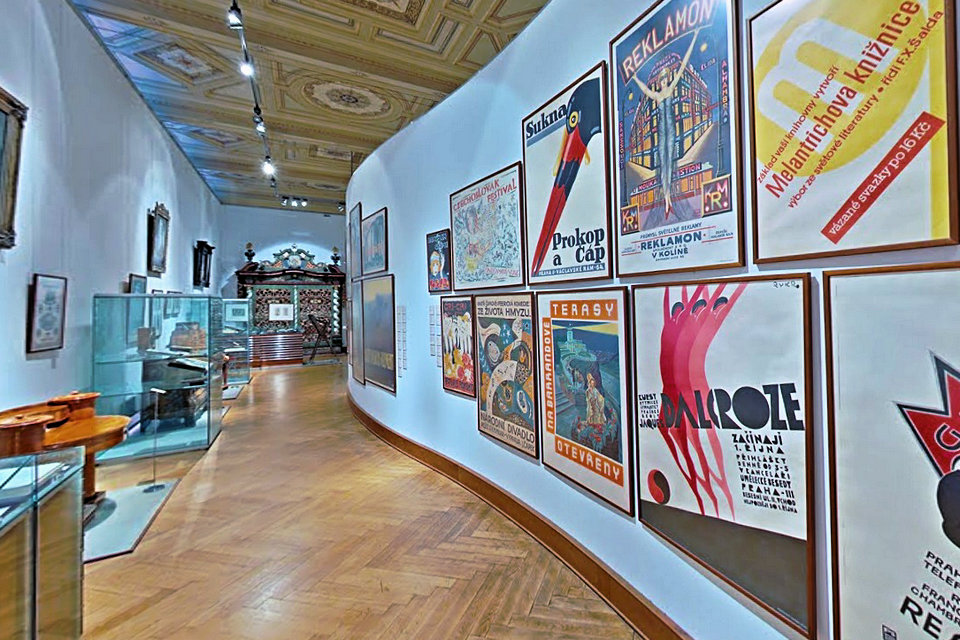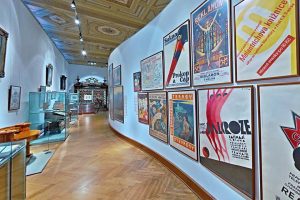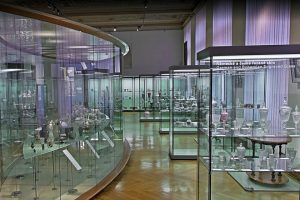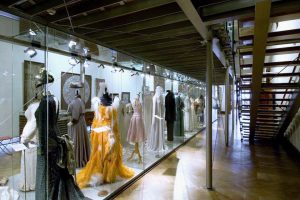These selected exhibits from the Museum of Decorative Arts in Prague, supplemented by pieces from the collections of Prague City Gallery and the West Bohemian Gallery in Pilsen, present outstanding works by Alfons Mucha that came into being in the atmosphere of the emancipation of art and the onset of modernism underway in the late 19th century and early 20th century.
The wide range of artistic positions at that time, manifested in the pursuit of an artistic synthesis, in the more subjective forms of Symbolism, and in the merging of different kinds of art, are all interconnected in terms of style by the characteristic decorativism of Art Nouveau, which was co-created by Mucha in particular through his designs for posters and advertisements.
This exhibited set of his representative pieces is largely related to Mucha’s life and work in Paris, where he belonged among the most prominent creators of the visual style in question which, through all manner of printed materials and posters, permeated the public space of the Parisian streets.
The exhibits presented here from the Museum of Decorative Arts in Prague show the importance of this institution’s collections. Its permanent exhibitions were opened to the public in 1900 and included not only historical artifacts, but also the most recent works such as Mucha’s posters. The Museum of Decorative Arts was probably the first collecting institution in the world that included posters in its permanent exhibition, giving rise through its systematic collecting efforts to a unique collection of 40,000 pieces, which now represents one of the most valuable and oldest European poster funds.
Over the years, the Museum of Decorative Arts acquired other Art Nouveau artifacts, especially glass, book design and illustration, furniture, fashion, photographs and items from other areas of artistic endeavor. Some were presented at the 1900 World’s Fair in Paris, which codified Art Nouveau as a unifying, pan-European decorative style (its name came from a pavilion presenting the interior decoration of the House of New Art of the Paris art dealer S. Bing). We believe this exhibition will take visitors back to an enchanting time, the beginning of modern European culture, and these unique artifacts will show how contemporary ideals, dreams and visions were reflected in the everyday life of this breakthrough age.
Museum of Decorative Arts In Prague
Founded in 1885, the Museum of Decorative Arts in Prague (UPM) is housed in a Neo-Renaissance edifice built in 1897–1901 after the designs of architect Josef Schulz. The Museum’s rich collections include decorative and applied arts and design work ranging from Late Antiquity to the present day, with focus on European objects, particularly arts and crafts created in the Bohemian Lands. The impressive interior of the permanent exhibition “Stories of Materials” offers visitors an excursion into the history and development of decorative arts: glass and ceramics, graphic art and design, objects made in metal, wood and other materials, jewelry, clocks and watches, textiles, fashion, toys and furniture.
An integral part of the Museum is the largest Czech library specializing in the arts and related fields. The Library offers visitors on-site loan and copying services, database access and searching in the ART (Art and Architecture) subject gateway.
The UPM presents its holdings at branch museums at the chateau in Kamenice nad Lipou and the Textile Museum in Česká Skalice. The Museum also administers the Josef Sudek Gallery on Úvoz Street near Prague Castle.
Our objective is to ensure that the Museum of Decorative Arts in Prague is a place for innovative learning that facilitates the understanding of the significance of objects of decorative arts and design, in combination with architecture and other art disciplines. We aspire to contribute to the improvement of the quality of life and the preservation of creativity in an increasingly uniform environment and to create a forthcoming space for the engagement of the public and the discussion of the cultural milieu and the world that surrounds us.






